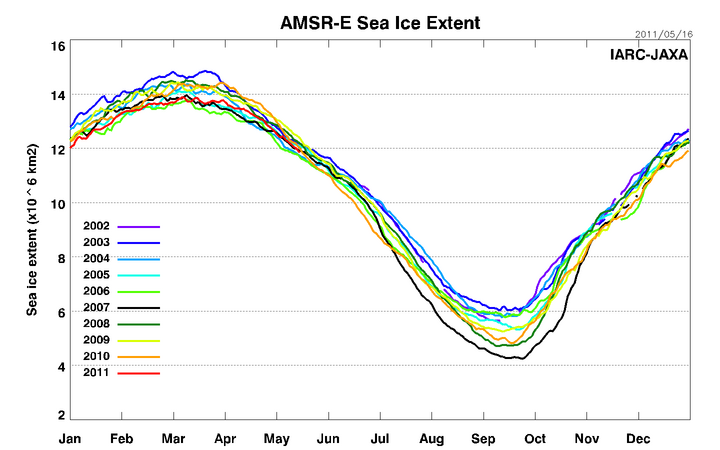A popular misconception of the global warming community is that low ice extent in September is a positive feedback, because the ice reflects less sunlight. This sounds convincing, until you realize that the Arctic receives very little sunlight in September, and the sunlight it does receive is at a very low angle.

http://earthobservatory.nasa.gov/Features/EnergyBalance/page3.php
The SW radiative balance is affected much more by the amount of ice in May, June and July, which hardly varies from year to year.
http://www.ijis.iarc.uaf.edu/seaice/extent/AMSRE_Sea_Ice_Extent.png
However, a lack of ice in September allows more LW radiation to escape from the ocean back into space, which makes low ice extent a negative feedback, rather than positive one.



The fact that the extents are so tightly identical to each other in May and June seems to suggest the ice cares mostly about the Sun, not CO2.
om, I strongly believe that May/Dec are the only two times that count.
The rest of it is extremes, and they can be affected by too many other things.
“The SW radiative balance is affected much more by the amount of ice in May, June and July, which hardly varies from year to year.”
Difference between minimum and maximum sea ice areas for May, June, and July
May 1.68 million sq kilometers
June 2.3 million sq kilometers
July 2.64 million sq kilometers
Boy, those sound like really big numbers!